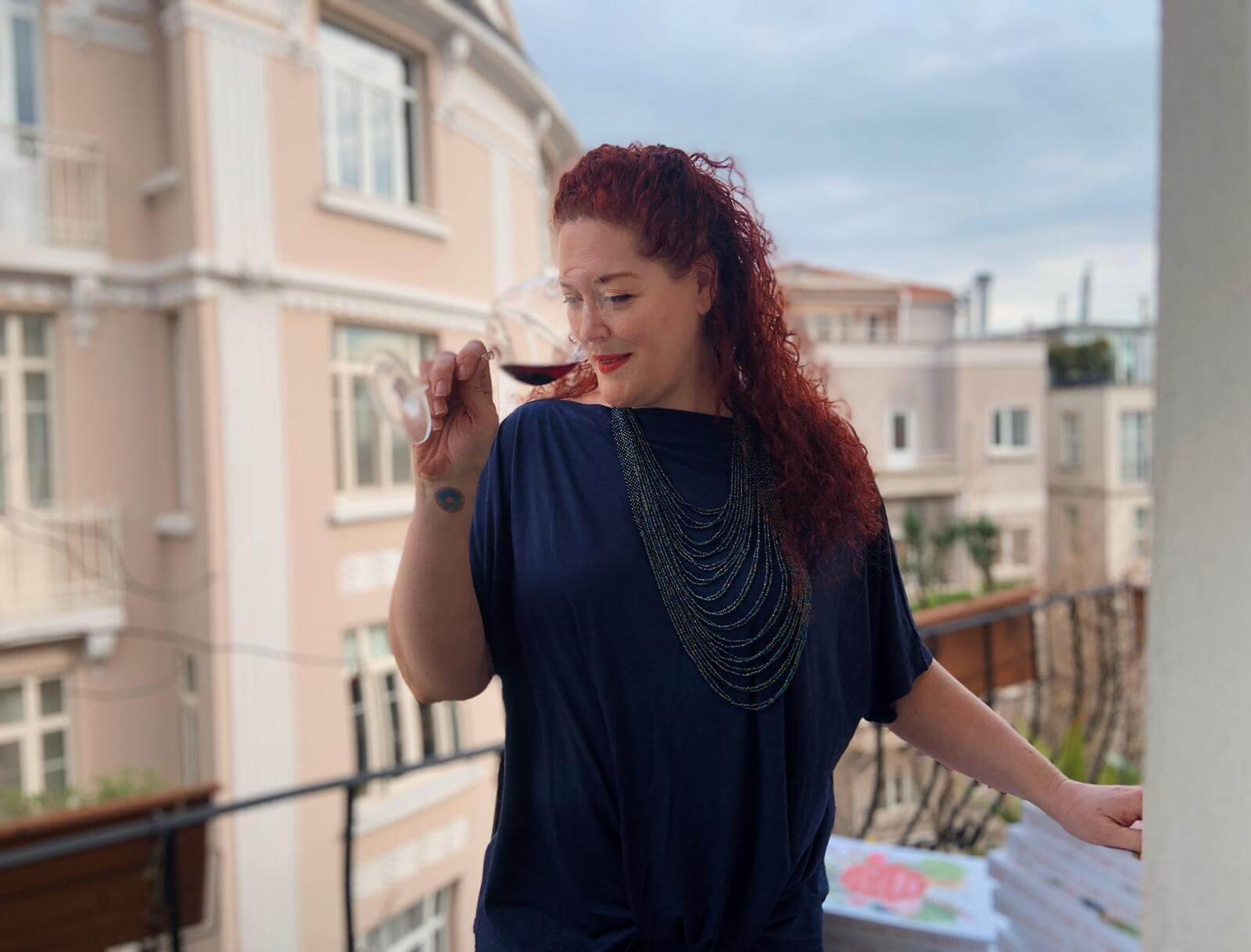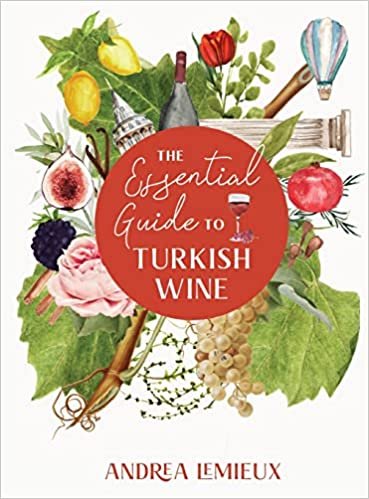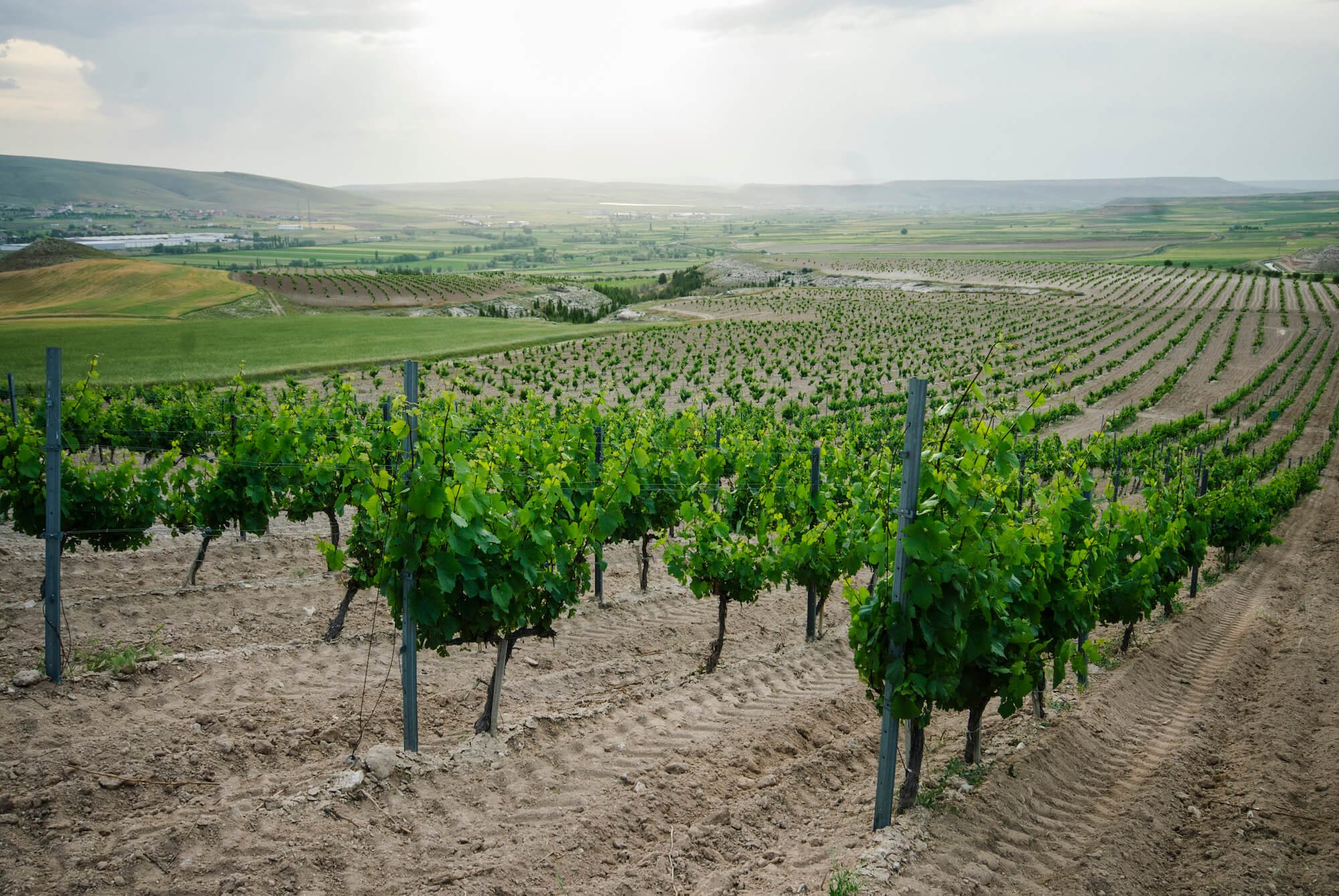How Andrea Lemieux Became an Expert & Advocate for Turkish Wine
Andrea Lemieux photo credit Başak Gökkılıç
When Andrea Lemieux moved to Istanbul from the US in 2012, she quickly realized she had a lot to learn about Turkish wine. Inspired, she passed the WSET levels 1&2 (in Turkish!), started a blog, The Quirky Cork, and wrote a book, The Essential Guide to Turkish Wine. She now offers a full range of wine-related services for locals and travelers alike, from wine reviews and in-person and online tastings to personalized wine itineraries for touring the diverse wine regions of Turkey.
The Essential Guide to Turkish Wine
Her book is a friendly yet comprehensive immersion into the story of a Muslim country that is also one of the oldest wine-producing places in the world, whose wine industry is rapidly growing and modernizing. She shares the fascinating history of traditional and modern Turkish winemaking and describes the 40 or so indigenous grapes used to make wine in what she calls a “new old world” wine country. “Countries like Turkey and Georgia, Armenia, Lebanon…who have been planting grapes and making wines since before history was written down, in a way, we should be [considered] part of the old world because this is where wine traditions began and where vines were first cultivated.”
Researching Turkish Wines & Wineries
Lemieux and her research partner, photographer Emma Aslihan Başer Rose, traveled around Turkey by car, visiting almost 100 wineries small and large, tasting wine and meeting winemakers, mostly speaking Turkish, and enjoying the innate Turkish hospitality known as misafirlik. Says Lemieux, “You couldn’t just go in for a couple of hours to do your interview and take your pictures, you then got taken back to their home and introduced to their whole family…and suddenly you’re holding someone’s newborn!” These types of encounters led her to include many personal stories about the people behind the wineries she visited.
Naturally, their journey was full of adventures and misadventures. “One of the things, which in fact happened two or three times,” says Lemieux, “is that not all of these wineries have addresses.” She missed more than one turn when traveling by car through the vineyards and olive groves of Turkey’s diverse wine regions.
Wine Tourism in Turkey
“Wine tourism is kind of a tricky subject here because advertising alcohol is illegal in Turkey…so many [wineries] are building restaurants and hotels on site. Usually, the restaurant comes first because that allows them to legally provide a tasting.” Recently, wineries have also started to join forces to create unofficial wine routes to help tourists. “The one in the Urla region in Izmir (near the Aegean Sea), is the most well-organized, but it also has incredibly forceful personalities driving it,” says Lemieux, “...but there’s signage everywhere pointing to where the wineries are, and the roads are some of the best roads I’ve seen in Turkey.”
One of her favorite wineries, Vinolus, focuses on both local and so-called international grapes, and exports all over the world. Vinolus is run by a woman named Oluş Molu outside of Kayseri, in Central Anatolia. Certified organic and intentionally integrated into the local ecosystem, the large boutique winery offers a hotel and tasting room with cooking classes and all sorts of events, showcasing the diverse grape varieties grown on site. “Her kalecik karasi is the most stunning version that we have here. You can close your eyes and think that you’re drinking Burgundian Pinot.”
Grape Varieties
Turkish wines from indigenous grapes range widely in style. White grapes, like emir, can produce, according to Lemieux, tart, crisp wines that are often compared to torrontes, while narince is more of a chardonnay like workhorse that can be aged in oak for richness or left unoaked for a more simple expression. Black grapes like the versatile kalecik karasi are used in “every single conceivable style—still blanc de noir, rosé, unoaked red, oak aged red, traditional method sparkling blanc de noir and rosés” while wines from the öküzgözü grape tend to be still, and are often packed with acidity, light tannins, and bright red fruit. There’s even a producer making skin contact wine in amphora collected from around the countryside. Many of these wines are exported, but even wine savvy folks are often quite unfamiliar with them. Lemieux hopes that her readers in the US will begin to request more Turkish wines, especially those from native grape varieties, from their local shops, restaurants, and purveyors. Lucky for us, she not only provides the names and stories of the grapes and the wineries, but also a clear pronunciation guide to the Turkish language so we know how to ask.




